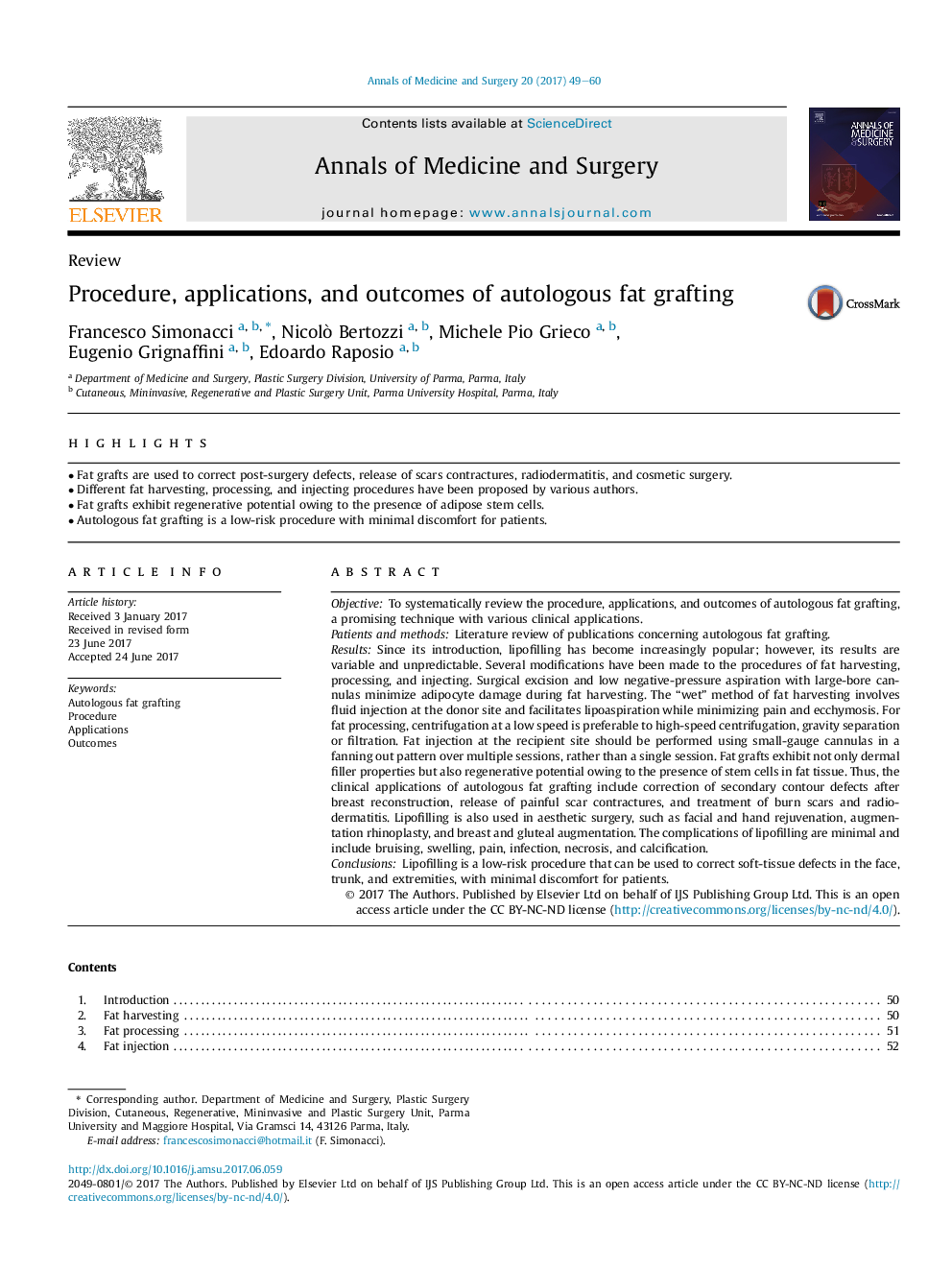| کد مقاله | کد نشریه | سال انتشار | مقاله انگلیسی | نسخه تمام متن |
|---|---|---|---|---|
| 5722878 | 1608907 | 2017 | 12 صفحه PDF | دانلود رایگان |
- Fat grafts are used to correct post-surgery defects, release of scars contractures, radiodermatitis, and cosmetic surgery.
- Different fat harvesting, processing, and injecting procedures have been proposed by various authors.
- Fat grafts exhibit regenerative potential owing to the presence of adipose stem cells.
- Autologous fat grafting is a low-risk procedure with minimal discomfort for patients.
ObjectiveTo systematically review the procedure, applications, and outcomes of autologous fat grafting, a promising technique with various clinical applications.Patients and methodsLiterature review of publications concerning autologous fat grafting.ResultsSince its introduction, lipofilling has become increasingly popular; however, its results are variable and unpredictable. Several modifications have been made to the procedures of fat harvesting, processing, and injecting. Surgical excision and low negative-pressure aspiration with large-bore cannulas minimize adipocyte damage during fat harvesting. The “wet” method of fat harvesting involves fluid injection at the donor site and facilitates lipoaspiration while minimizing pain and ecchymosis. For fat processing, centrifugation at a low speed is preferable to high-speed centrifugation, gravity separation or filtration. Fat injection at the recipient site should be performed using small-gauge cannulas in a fanning out pattern over multiple sessions, rather than a single session. Fat grafts exhibit not only dermal filler properties but also regenerative potential owing to the presence of stem cells in fat tissue. Thus, the clinical applications of autologous fat grafting include correction of secondary contour defects after breast reconstruction, release of painful scar contractures, and treatment of burn scars and radiodermatitis. Lipofilling is also used in aesthetic surgery, such as facial and hand rejuvenation, augmentation rhinoplasty, and breast and gluteal augmentation. The complications of lipofilling are minimal and include bruising, swelling, pain, infection, necrosis, and calcification.ConclusionsLipofilling is a low-risk procedure that can be used to correct soft-tissue defects in the face, trunk, and extremities, with minimal discomfort for patients.
Journal: Annals of Medicine and Surgery - Volume 20, August 2017, Pages 49-60
